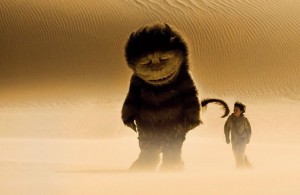 When I was a kid, Where the Wild Things Are was my favorite book. It was also my mother’s favorite book to read to my brother and me. My niece Anya, now three, has loved it since she was old enough to understand narratives. Last I checked, it was her favorite book, too. Every time it comes up in conversation with anyone close to my age — 36 — there seems to be universal agreement that it was the best children’s book of our generation, and possibly of all time.
When I was a kid, Where the Wild Things Are was my favorite book. It was also my mother’s favorite book to read to my brother and me. My niece Anya, now three, has loved it since she was old enough to understand narratives. Last I checked, it was her favorite book, too. Every time it comes up in conversation with anyone close to my age — 36 — there seems to be universal agreement that it was the best children’s book of our generation, and possibly of all time.
When Maurice Sendak died yesterday, I did not feel pangs of loss. He was 83 and had the privilege of living independently up until the end. He had a long life, and through that book alone, made an indelible mark on this world.
But it did make me think back on that book and why I loved it so much, and why I still love it now when I read it to Anya. I especially loved Spike Jonze’s 2009 adaptation of the book as a feature-length film, and not because it was faithful to Sendak’s original text. I loved it precisely because he departed from the text, took artistic license, and made it something entirely new — something more for adults who’d grown up with the book than for children. After all, how do you turn a book with only 10 sentences into a 104-minute movie without adding to it?
Why did this book, as warm and fuzzy as it is violent and terrifying, resonate with us so much? Why does it continue to feed our imaginations, and remind us of the best parts of childhood, despite its horrors? Why, in short, is it still the best?

Comments on this entry are closed.
That our nightmares could be beautiful, that our monsters could be lovable, that our “badness” was good, that our hairiness, our rage, our contrary tempers, our refusals, our rebuttals, our fears, our meanness, our awkward demands, could all be transformed, transcendent.
Well put.